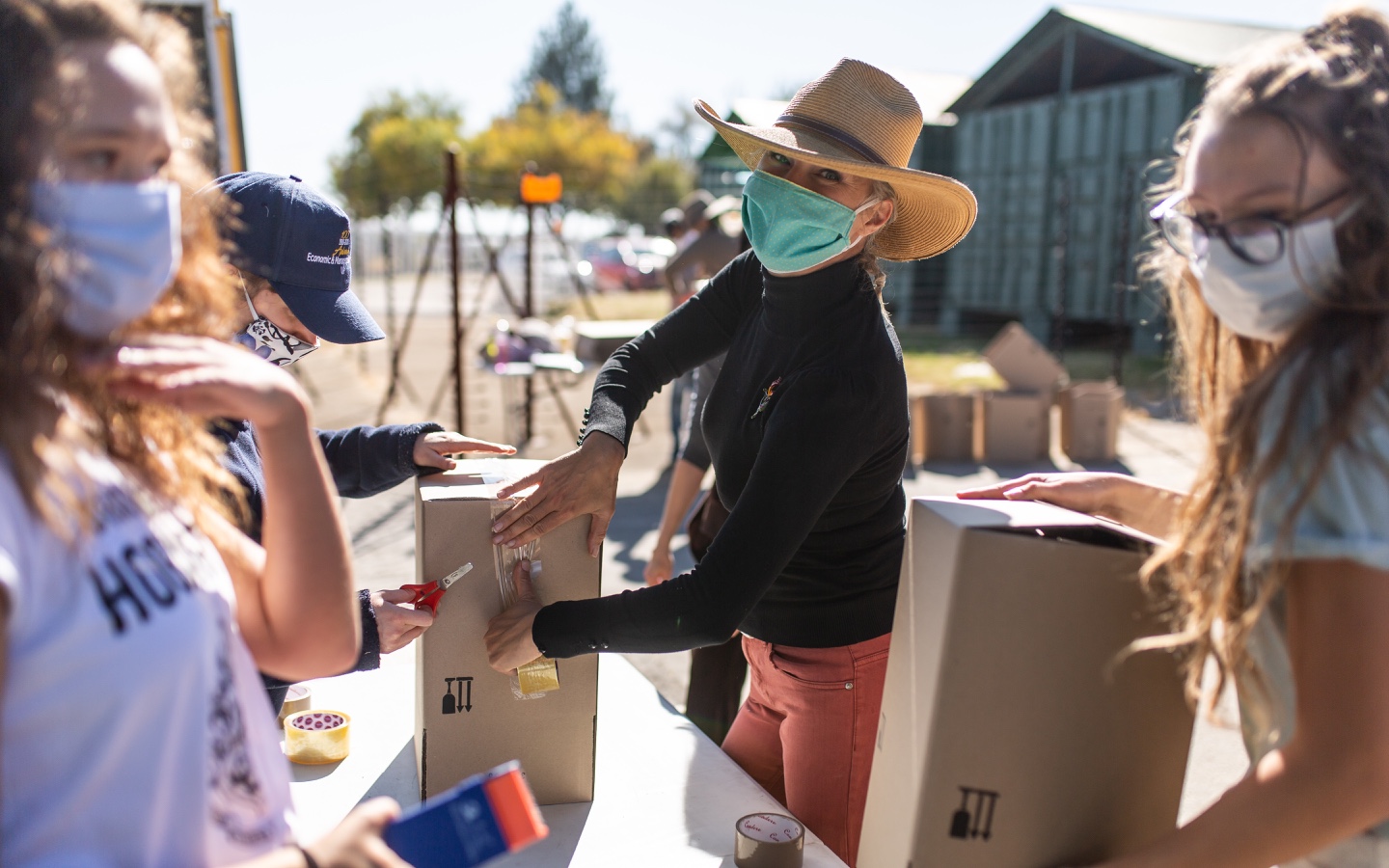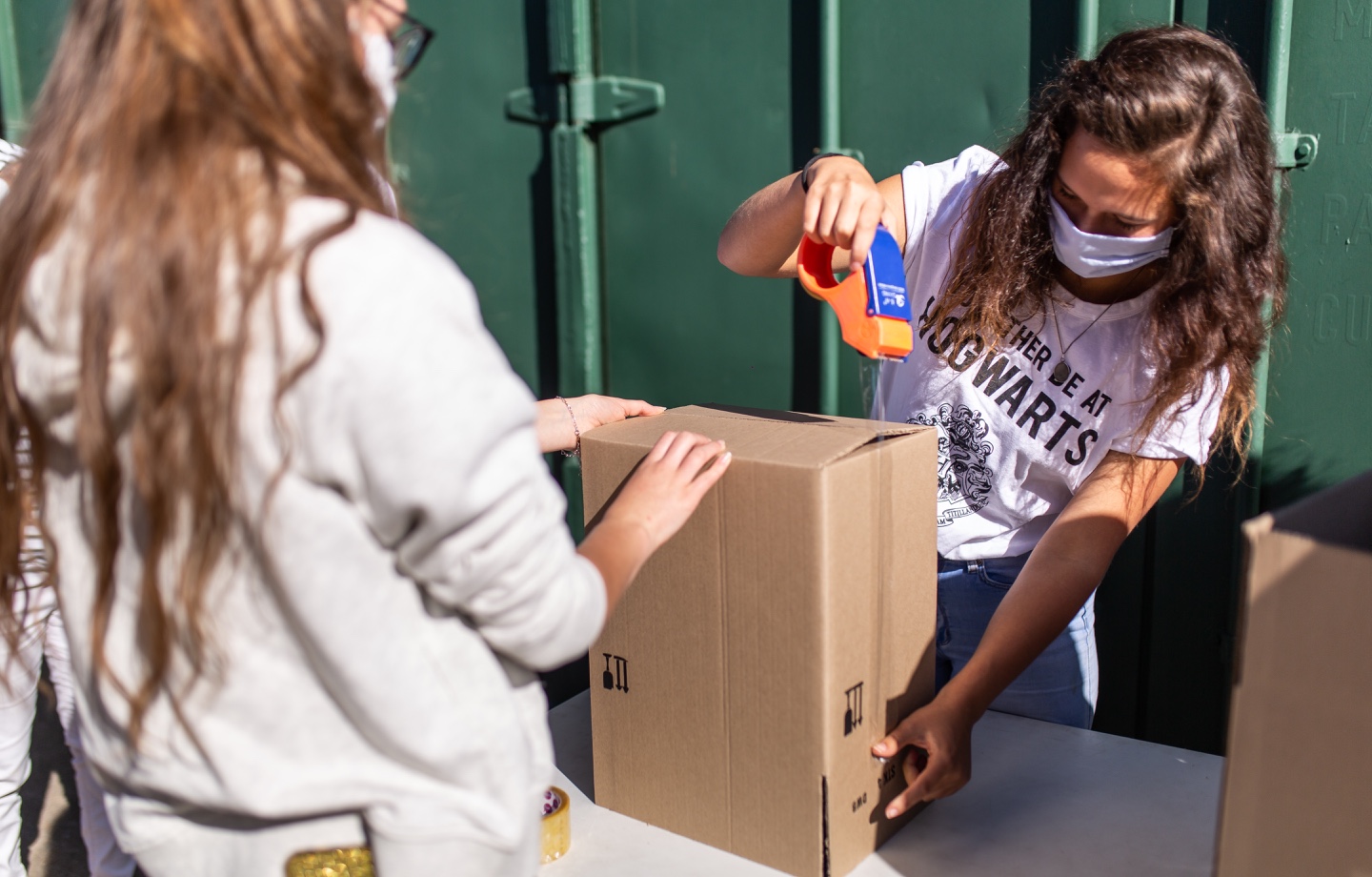Hunger in America is at an all time high. Here’s how you can help today.
Hunger is at an all-time high in America, made even more urgent by the Covid-19 crisis. The nonprofit Feeding America estimated that due to the effects of the pandemic, 50 million people may struggle to feed their household in 2020, compared to the more than 35 million people who experienced food insecurity last year. Families all over the country are struggling to get by with no federal aid since the beginning of the pandemic, and those who do qualify for federal nutrition programs must often supplement with donated food, while food pantries around the country have been overwhelmed all year. For those of us who have been lucky enough to only be stressed about cooking way more than we usually do, it’s more important than ever to look for ways to fight hunger in our communities. And there are lots of ways to do so.
How to Donate
In April, Feeding America estimated that their food bank network would fall short of necessary resources by a whopping $1.4 billion — so yes, donations will always be a great way to contribute to the cause. The most effective donation, as is so often the case, is giving to those who are doing the work right in your own backyard. Feeding America provides a searchable database of food banks around the country, and many currently have donation options that specifically support Covid-related efforts.
Beyond food pantries, there also remains plenty of need to address inequities at all the steps that get the food to consumers in the first place — food workers have been among the most vulnerable to the effects of Covid. Consider donating as well to organizations like Migrant Justice, which advocates for migrant
How to Volunteer
It’s no surprise that Feeding America calls Covid a “perfect storm” of challenges for food banks; these efforts have been hit from all angles, including a 60 percent reduction of the usual volunteer workforce. Food banks need volunteers for all kinds of tasks, including sorting and packing food, delivering meals, keeping warehouses sanitary, and fundraising. Volunteer coordinators can help you figure out the best way for you to contribute based on your skills and schedule — and children are often welcome to get involved too.
The pandemic has already brought more mainstream attention to the huge lifting that mutual aid hubs are doing around the country. And surprise — they are also doing critical work to address hunger, during Covid and beyond. Food assistance is a major part of many hubs’ offerings, including grocery deliveries for elderly or ill residents, financial assistance for buying food, the creation of food boxes, and resources to help residents quickly locate food donations and other forms of assistance. To get involved, you can find the group closest to you here.

Contribute to Grassroots DIY Efforts
Beyond the usual organizations that address food insecurity, there’s been a huge surge this year in creative, on-the-ground efforts to grow food and get it distributed to those who need it most. Those efforts need donations and volunteers as well, and often in very unique ways.
One of the biggest efforts to appear in cities around the U.S.
Community gardens are also making a huge difference in nutrition education and bringing wholesome produce to areas that may be food deserts. It’s likely that there is a community garden near you already that could use volunteers or donations. You can also find resources on creating and improving community gardens through the Cooperative Gardens Commission, a knowledge-sharing network that started in response to Covid-19. This year, Avocado has been donating gardening kits through Big Green, a network of gardening and food literacy programs that provides resources for students to build food security in their own communities. You can support an existing fundraiser for the organization or create one of your own here.

Shop Pillows
The Essential Organic Pillow Collection
Gentle, breathable, non-toxic support.






